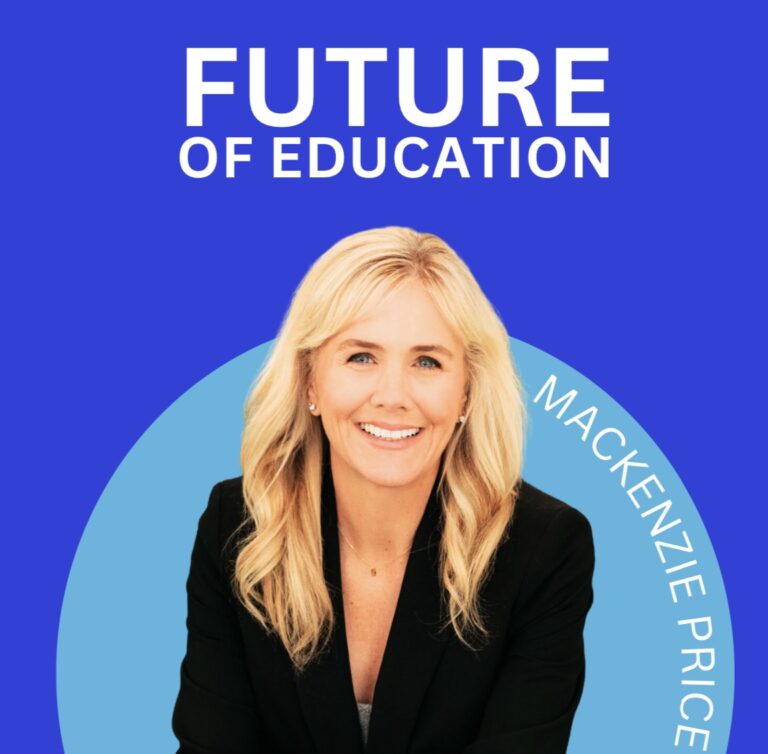Improving kids’ reading comprehension w/edtech
Dr. Julie A. Van Dyke
Cascade Reading

- Part 1 Improving kids’ reading comprehension w/edtech
- Part 2Embracing new edtech in the classroom
Show Notes
-
01:03Phonemic and phonological awarenessDr. Julie A. Van Dyke has been a senior research scientist at Haskins Laboratories for over 20 years, where the concept of phonemic awareness and phonological awareness was discovered. Essentially, Haskins Laboratories has been a pioneer in the science of reading dialogue.
-
02:02The science of reading dialogueThe science of reading is a movement among educators and scientists, focused on teaching based on how the brain processes language. It aims to connect what is learned in the lab with classroom teaching methods to improve literacy rates in children via phonics-based reading.
-
03:22The importance of comprehension in reading instructionRecent years have seen more adoption of evidence-based reading practices in school districts and classrooms. However, stagnant reading proficiency rates highlight the need for increased emphasis on reading comprehension, but the lack of effective comprehension tools is an issue.
-
06:39Early predictors of future reading skillsThe number of books at home and whether kids are read to from those books is a major predictor of reading ability. In addition, building children's recognition of letters and their corresponding sounds lays a strong foundation for later reading success.
-
08:08Guidance for parents of early readersFor kindergarten to second-grade students, focusing on a phonics-based program that teaches vowel and consonant sounds is crucial. The Reading League provides a free downloadable guide to help parents choose reading programs that align with evidence-based practices.
-
09:44Edtech reading programs and early interventionIn addition to diagnostic programs, several app-based reading programs exist such as GraphoGame. Early intervention is key, and parents with children in public schools should take advantage of free evaluations if they observe any reading difficulties in their child.
-
10:52Monitoring and testing children for reading difficultiesIn many states, diagnosis can occur before kindergarten, and early intervention services are available from birth through age three. Keep an eye on children's language development for any delays, and consult a pediatrician if any are noticed by age three to get them tested.
-
13:47Early intervention for language and reading difficulties1 in 10 children are likely to have dyslexia and another 1 in 10 may have developmental language delay, underscoring the importance of early intervention. Parents should not hesitate to seek early evaluations for their children to get them the support they need.
-
15:24Edtech's role in boosting reading comprehensionEdtech tools can offer personalized support that addresses individual reading needs, which can be challenging for a teacher with many students. Cascade Reading leverages AI and natural language processing to help students struggling with syntactic analysis.
-
18:12Developing a love of reading in children with edtechThe Cascade Reading Chrome plugin allows children to read topics they're interested in, in a format that enhances comprehension. By providing children with the materials, they already enjoy in an easily digestible format, we can make reading more accessible and engaging.
Quotes
-
"If you have a phonics-based reading program for a child, even one with dyslexia, we can change the way their brain processes language so that it looks more like a student who doesn't have those disabilities." - Dr. Julie A. Van Dyke
-
"One of the major predictors of reading ability is the number of books in the home, and whether kids get those books read to them. Another predictor is whether kids can recognize letters and know their sounds." - Dr. Julie A. Van Dyke
-
"At public school, if kids are having difficulties with reading, go and get them evaluated. It is your right to get your child evaluated for free." - Dr. Julie A. Van Dyke
-
"By age three, children should have a good amount of spoken language, which is the foundation of reading." - Dr. Julie A. Van Dyke
-
"One or two kids in every 10 are going to have dyslexia, and many of them are not diagnosed. In a classroom of 10 kids, four out of 10 kids could have serious clinical language problems." - Dr. Julie A. Van Dyke
- Part 1 Improving kids’ reading comprehension w/edtech
- Part 2Embracing new edtech in the classroom
Up Next:
-
Part 1Improving kids’ reading comprehension w/edtech
Dr. Julie A. Van Dyke, Chief Scientist at Cascade Reading, delves into using edtech to enhance children's reading comprehension. Despite the growing popularity of phonics-based curriculums, reading comprehension remains a major challenge for many students. This gap highlights the need to move beyond simply decoding words and prioritize understanding the meaning of what is read. Today, Dr. Van Dyke discusses improving kids' reading comprehension with edtech.
-
Part 2Embracing new edtech in the classroom
Dr. Julie A. Van Dyke, Chief Scientist at Cascade Reading, delves into using edtech to enhance children's reading comprehension. Today's classrooms are demanding, making it challenging for teachers to provide individualized support. However, integrating technology into the classroom not only enables personalized instruction but also empowers students with learning difficulties and non-native English speakers. Today, Dr. Van Dyke discusses embracing new edtech in the classroom.
Play Podcast



